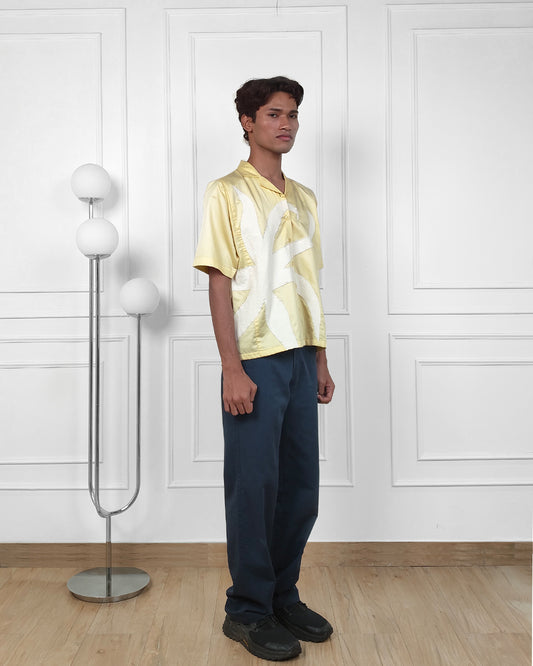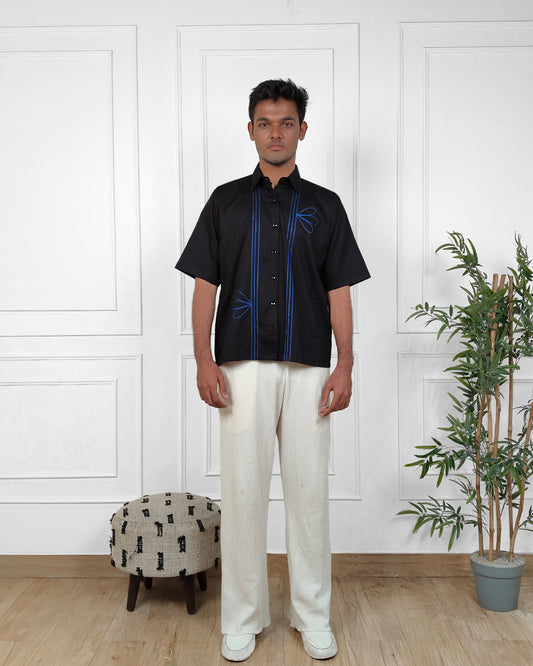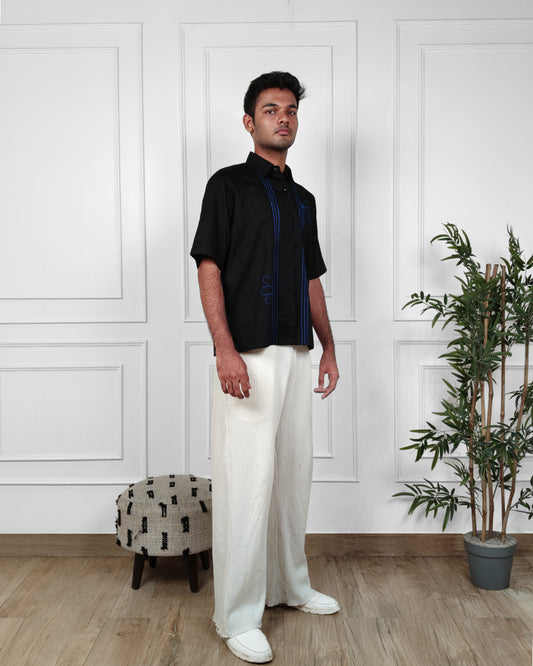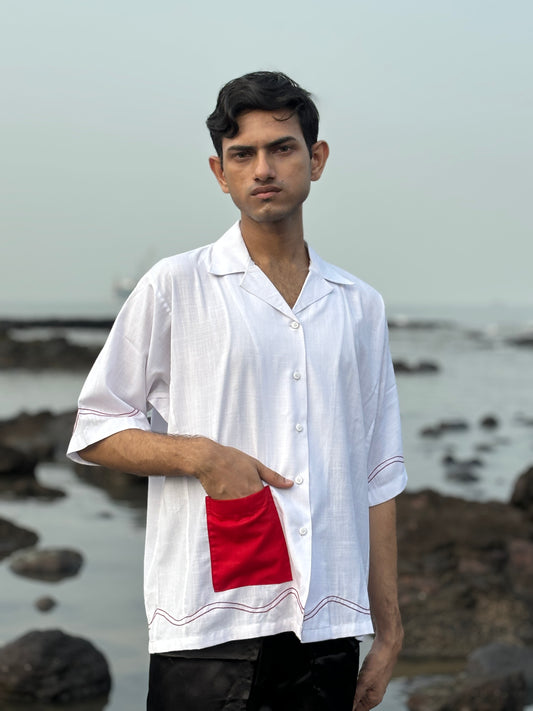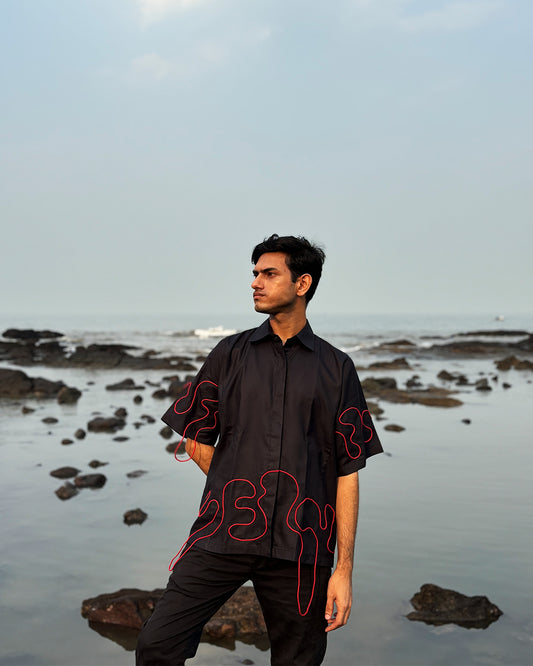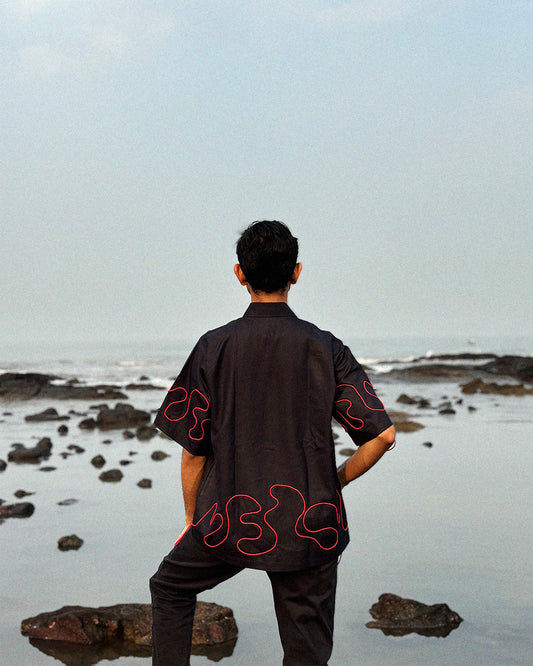
History of Applique Embroidery: An In-Depth Exploration
Applique embroidery is an ancient textile art form that has traversed centuries, regions, and cultures. This intricate method of adding decorative layers of fabric to a base material is a fascinating aspect of both historical and contemporary fashion and design. Through this blog, we will explore the origins, evolution, and global spread of applique embroidery, analyzing its various techniques, significance, and the individuals and communities who popularized and perfected it.
What is Applique Embroidery?
Applique embroidery is a textile technique in which pieces of fabric are sewn onto a larger piece of fabric to create decorative patterns or images. The term "applique" comes from the French word appliquer, meaning "to apply" or "to place upon." In the world of embroidery, it refers to the addition of fabric shapes or motifs onto a background fabric, often using decorative stitching to hold the pieces in place.
The technique involves layering one fabric over another, and it can be sewn down by hand or machine, with the edges of the overlaying fabric typically being finished with a running stitch, blanket stitch, or satin stitch. Applique can range from simple geometric patterns to intricate, detailed designs depicting landscapes, animals, or figures.
Origins and Early History of Applique Embroidery
The origins of applique embroidery date back to the ancient civilizations, with some of the earliest examples found in Egypt and China. Historical evidence suggests that applique techniques were used as early as the 3rd century BCE.
Ancient Egypt and the Middle East
In ancient Egypt, elaborate garments were often decorated with applique to create intricate designs. One of the most notable examples is the famous Tutankhamun burial mask, which incorporated precious fabrics and decorative elements similar to applique embroidery. This method was not just used for decorative purposes but also as a way of showcasing wealth and status.
Ancient China and East Asia
In China, applique was used to decorate robes, especially those worn by the elite. The Chinese Imperial Court was known for its extravagant use of textile arts, including applique, to express cultural values and display the imperial status. Chinese embroidery often incorporated symbols such as dragons, phoenixes, and lotus flowers, crafted using the applique technique.
Africa and the Caribbean
In Africa, applique embroidery was used for both decorative and ceremonial purposes. The technique evolved with regional variations, with each culture adding its unique flair to the process. In particular, the Kuba people of the Congo in Central Africa are renowned for their intricate applique textile art, which often involved layering fabrics and embellishing them with beadwork and embroidery.
The Rise of Applique in Europe
Applique embroidery began to gain prominence in Europe during the Middle Ages, particularly in the 12th and 13th centuries. This period saw the growth of elaborate ecclesiastical vestments, where the technique was used to add decorative elements to religious garments, such as the vestments of bishops or the banners carried during religious processions.
In the Renaissance period, applique embroidery evolved to include more sophisticated designs, with florals, mythological figures, and scenes from daily life being depicted. The technique spread across Italy, Spain, France, and England, gaining popularity among the noble classes. The ability to create complex and luxurious fabrics suited the tastes of the rich and royal, and many royal courts became hubs for the development of fine textiles.
Applique During the Industrial Revolution
The 18th and 19th centuries were transformative for applique embroidery due to the Industrial Revolution, which introduced machinery that allowed for mass production of fabrics. During this period, there was a rise in the production of ready-made clothing and textiles for the masses, and applique designs began to appear on more affordable, mass-produced goods. This marked a shift in how applique was perceived, moving from an exclusive, elite craft to a more widely accessible form of decoration.
The popularity of applique in this period can be attributed to the invention of the sewing machine, which allowed for more consistent and faster stitching, making the technique more available to home sewers. As a result, applique became a staple in households across Europe and North America, particularly in quilts, clothing, and home decor.
The Global Spread and Popularization of Applique
Applique embroidery spread rapidly around the world due to trade, exploration, and cultural exchange. As European explorers and traders traversed different continents, they came into contact with various cultures, which influenced the global adoption of the technique.
India and Southeast Asia
Applique embroidery found a unique expression in India, particularly in the states of Gujarat and Rajasthan. The Kutch region in Gujarat is renowned for its applique technique, where intricate designs are created by sewing pieces of colorful fabric onto a contrasting background. This art form was often used in the creation of textiles for ceremonial purposes, such as wedding garments or wall hangings. Applique in India is often paired with mirror work, creating dazzling reflective surfaces that are used in festive garments.
In Southeast Asia, particularly in Indonesia, applique was used to decorate traditional garments such as batik sarongs and ceremonial textiles. Here, the technique was intertwined with local folklore, often depicting motifs from nature and mythology.
The Americas
Applique also made its way to the Americas, primarily through the influence of European settlers and enslaved Africans. In the southern United States, applique was commonly used in quilting traditions, particularly in African American quilting. The Baltimore Album Quilt, a famous example of this style, used applique to create intricate blocks filled with floral motifs, animals, and figures.
The Evolution of Applique Techniques
Over the centuries, applique embroidery has undergone significant transformations. The following are some of the key techniques and styles that evolved within the tradition:
Reverse Applique
Reverse applique is a technique where the background fabric is cut away to reveal the layer beneath it, creating a stunning contrast. This style is often associated with Latin American textiles, particularly in Mexico and Guatemala.
Machine Applique
With the advent of industrial sewing machines in the 19th century, machine applique became increasingly popular. This technique allows for faster, more precise stitching and has made applique embroidery more accessible to home sewers, designers, and manufacturers.
Fused Applique
Fused applique uses heat-sensitive fusible webbing to bond fabric layers together without the need for sewing. This modern technique is popular in quilting and crafting and has made applique more versatile for different fabric types and designs.
Modern Applications of Applique Embroidery
- Today, applique embroidery is still widely used, albeit with new materials, technologies, and design sensibilities. Fashion Designers continue to use applique for creating detailed patterns on garments, including dresses, jackets, and accessories. Fashion houses such as Valentino and Dolce & Gabbana have incorporated applique into their haute couture collections.
- Quilting: Applique remains a popular technique in quilting, where it is used to create detailed, narrative designs and motifs. Quilters often employ both hand and machine techniques, combining applique with other styles such as patchwork and embroidery.
- Home Decor: Applique is commonly used in home decor items like pillows, bedspreads, and wall hangings. The use of applique in interior design allows for the creation of bespoke, intricate patterns that reflect personal tastes and cultural influences.
Conclusion
The history of applique embroidery is rich, diverse, and expansive. From its ancient origins to its global diffusion, applique has evolved through time, adapting to the needs and tastes of different societies. Whether through the hand-stitching of simple patterns or the machine-made precision of modern garments, applique continues to be a prominent textile technique that bridges cultural divides and speaks to both historical heritage and contemporary innovation.
References
- Rothstein, L. (1998). Embroidery: A Global History. London: Thames & Hudson.
- Chavez, C. (2001). Applique in the Americas: From Colonial to Contemporary. New York: Rizzoli International Publications.
- Mitchell, J. (2010). The Art of Applique: Techniques and Tradition. New York: Fairchild Books.
- Dyer, L. (2007). The History of Applique Embroidery. Paris: Editions BNF.
- Smith, A. (2015). "Applique and Textile Art: Cultural Evolution and Techniques." Journal of Textile History, 34(2), 112-125.
Images
- https://artsandculture.google.com/story/a-glimpse-into-ancient-chinese-textiles/vgJCSpNUVVFIIw
- https://artsandculture.google.com/story/sanskriti-museum-of-indian-textiles-sanskriti-museums/YAWhbEMEq4p9LQ?hl=en
- https://www.si.edu/object/wall-hanging%3Anmafa_79-13-24


